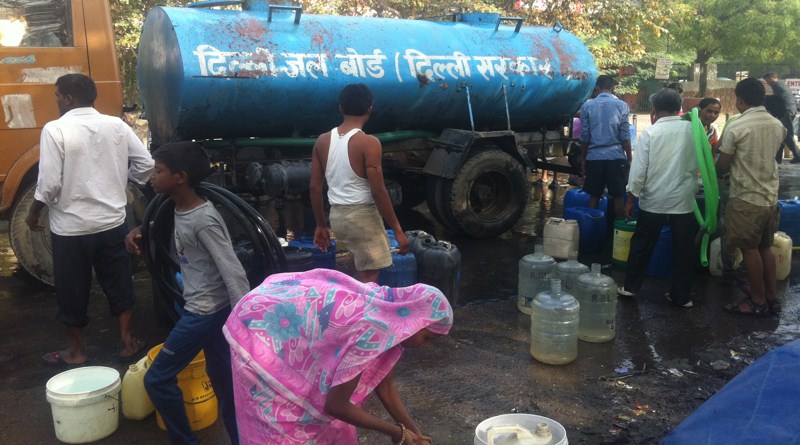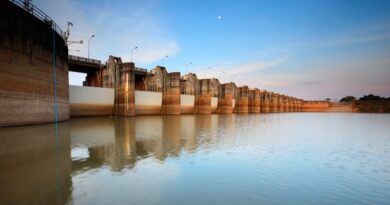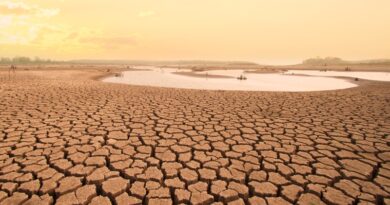Delhi, Mumbai, Kolkata among 30 Indian cities facing severe water risks

Delhi, Mumbai, Kolkata, Bengaluru, Pune and Amritsar are among 30 Indian cities that could face increasing water risks in the next few decades unless immediate actions are taken to mitigate and curb climate change, the World Wide Fund (WWF) said in its latest Water Risk Filter report.
India dominates both current and future lists of cities with the highest overall water risk, the report by the international conservation and environmental organization warned, adding that climate change may alter the distribution and quality of the country’s water resources.
Overall, there are 100 cities across the world facing the greatest rise in water risks by 2050, of which almost half the cities are in China, with other hotspots in South Asia, Middle East, South America and Africa. These cities are home to at least 350 million people as well as nationally and globally important economies. Globally, populations in areas of high-water risk could rise from 17 per cent in 2020 to 51 per cent by 2050.
The 100 cities include Beijing, Jakarta, Johannesburg, Istanbul, Hong Kong, Mecca and Rio de Janeiro.
With water crises already plaguing many of the world’s cities, WWF’s new water risk scenarios estimate that hundreds of millions of people in cities across the globe could face dramatically increased water risks.
In India, the other cities facing imminent water-related risks are Jaipur, Indore, Thane, Vadodara, Srinagar, Rajkot, Kota, Nashik, Visakhapatnam, Ahmadabad, Jabalpur, Lucknow, Hubli-Dharwad, Nagpur, Chandigarh, Ludhiana, Jalandhar, Dhanbad, Bhopal, Gwalior, Surat, Aligarh, Kozhikode and Kannur.
According to the report, some of the impacts of climate change include heavier rains, changed spatial and temporal distribution of rainfall, higher runoff generation, low groundwater recharge, melting of glaciers, changes in evaporative demands, and water use patterns in agricultural, domestic, and industrial sectors, etc. These impacts profoundly influence agricultural production and food security, ecology, biodiversity, river flows, floods, droughts, water security, human and animal health, and sea levels.
“The future of India’s environment lies in its cities. As India rapidly urbanizes, cities will be at the forefront both for India’s growth and for sustainability. For cities to break away from the current vicious loop of flooding and water scarcity, nature based solutions like restoration of urban watersheds and wetlands could offer solutions. This is our chance to re-evolve and re-imagine what the future of the cities could be”, said WWF India Programme Director Dr Sejal Worah.
The Smart Cities initiative in India could offer an integrated urban water management framework combining urban planning, ecosystem restoration and wetland conservation for building future- ready, water smart and climate resilient cities. Urban watersheds and wetlands are critical for maintaining the water balance of a city, flood cushioning, micro-climate regulation and protecting its biodiversity. The future of our cities and sustainability lies in the efficiency in closing the loop by integrating water supply, demand management.
“Cities across the world have paid a high price in recent years due to worsening water risks. From acute risks that have seen historic floods to chronic risks that have seen their taps running dry, the water challenges cities are facing are only going to increase in the coming decades because the impacts of climate change will primarily be felt through water,” said WWF Global Water Stewardship Lead Alexis Morgan.
Multi-stakeholder engagement and ownership involving local communities is key in creating and conserving sustainable water infrastructure and rejuvenating urban freshwater systems. There are many initiatives across the country that can be scaled up where multi-stakeholder groups have come together and revived wetlands such as Bashettihalli wetland in Bengaluru and the Sirpur Lake in Indore. Urban planning and wetland conservation needs to be integrated to ensure zero loss of freshwater systems in the urban areas, said the WWF report.
While improving urban water infrastructure and cutting water consumption will help reduce water risks, Nature-based Solutions – such as restoring degraded watersheds, reconnecting rivers to their floodplains, and restoring or creating urban wetlands – are critical to avoiding the worst-case scenario and to safeguarding economies and human wellbeing. Public funds will be needed in some cases, but bankable water solutions also offer effective ways to invest in projects that can enhance the health of freshwater ecosystems, reduce water risk and generate returns.
Private sector companies and financial institutions also have a vital role to play in reducing water risk to their operations and assets as well as cities, which are the main engines of sustainable economic growth. By working together with cities, they can collectively distribute the load of enhancing basin level resilience, the report suggests.
“Companies, cities, and investors – even ministries of finance, are finally waking up to the growing water risks facing the economy and the need to take urgent action to reduce their risks and tackle shared water challenges,” said Morgan.
“By harnessing the new scenarios in the Water Risk Filter, companies, cities and investors can better assess, respond and plan for climate and water resilience – helping to reduce water risks to their own operations as well as cities”.



